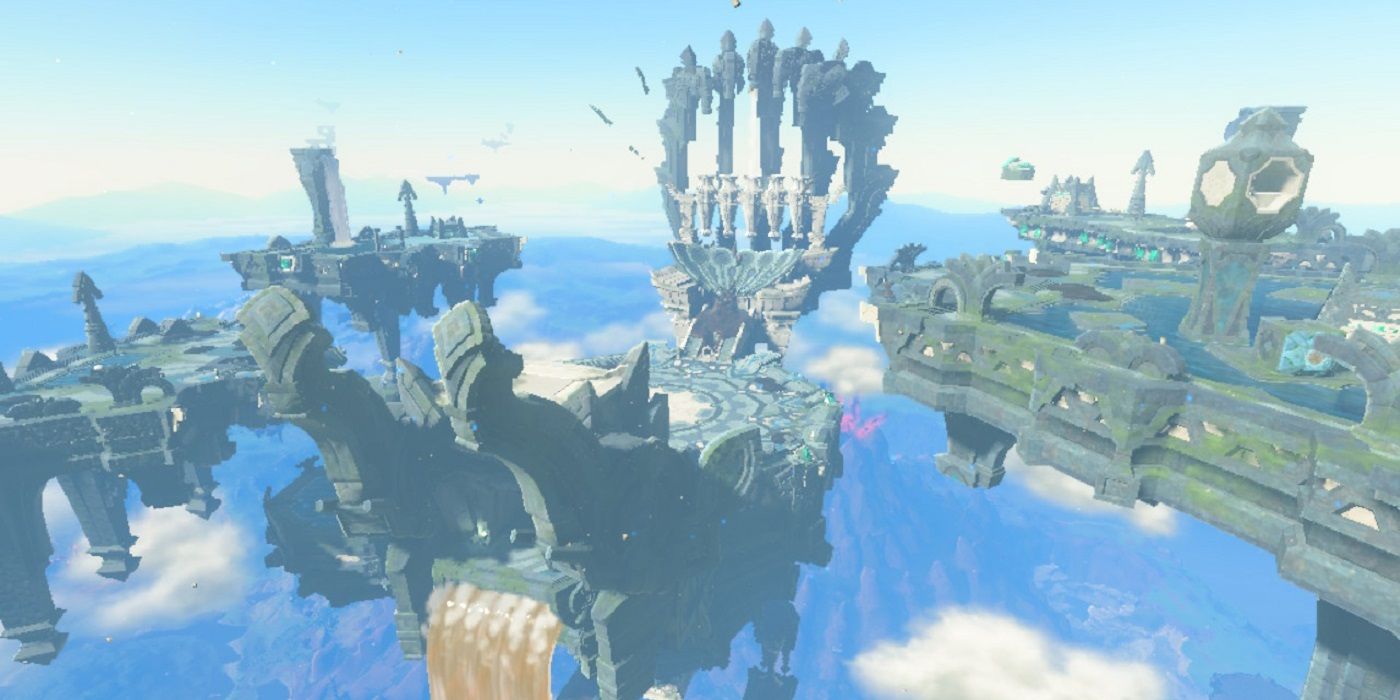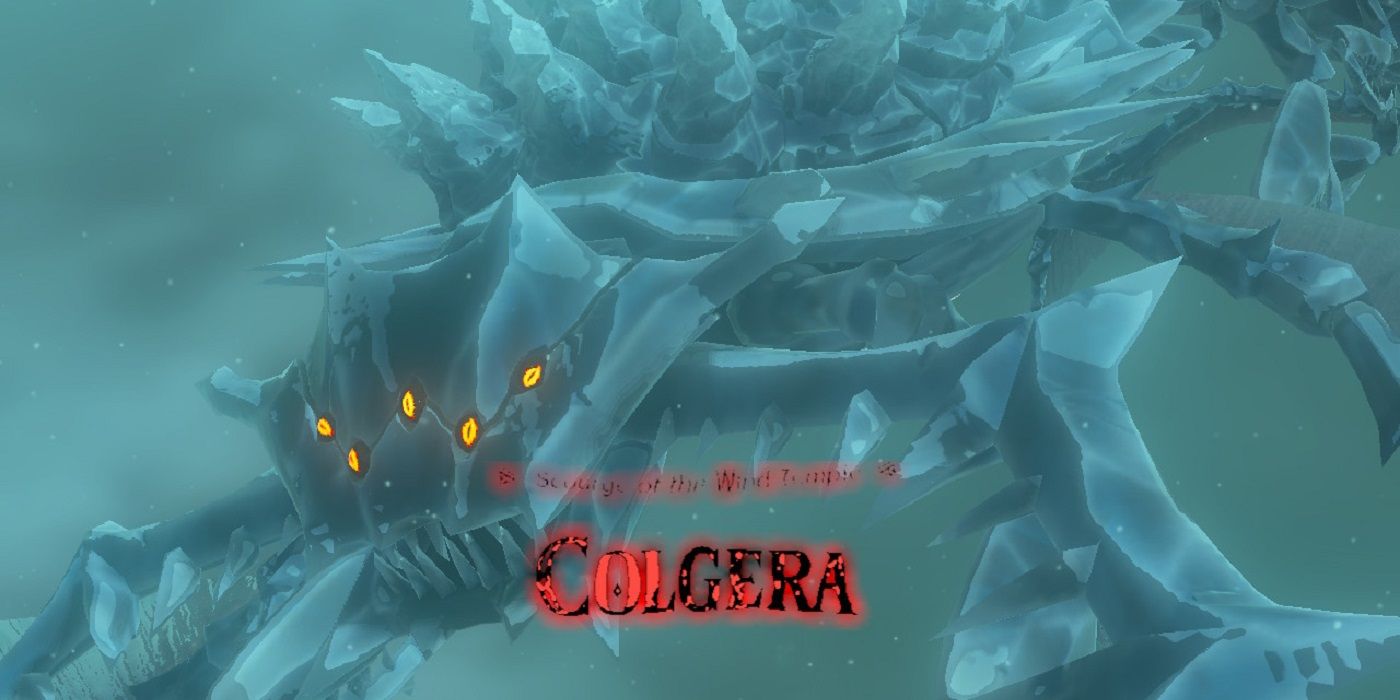Where are the Divine Beasts in The Legend of Zelda: Tears of the Kingdom? I haven’t reached the end of the game yet, I’m not even close, but it seems like they’ve just disappeared off the face of Hyrule. After being created as imposing guardians of the land and then lying dormant for a century before performing a crucial role in Link’s defeat of Calamity Ganon in Breath of the Wild, you’re telling me that they just… Left? Well, good riddance.
I didn’t like the Divine Beasts. I didn’t really like the physics puzzles and they seemed like too big a departure from the Temples that I loved so much in Zelda gone by. Where were the keys and the locked doors, where was the map and compass? Okay, some of those things I could live without, but manipulating the bodies of great metal beasts, as impressive as the outward designs were, just didn’t hit the same spot. My colleague Jade King nearly persuaded me to think about them differently by emphasising their narrative importance, but Breath of the Wild’s four dungeon-likes needed to be mechanically sound as well as narratively hard-hitting.
And then there were the bosses. Waterblight, Thunderblight, Windblight, and Fireblight Ganon were so boring. Where were your Stallords and Helmasaurs? Gone was Gohma and Dark Link was done. The answer, of course, was that these bosses were replaced by Hinoxes and Lynels in the overworld, but it meant that the crescendo of each Divine Beast fell flat, with the opposite problem to the rest of the dungeon: all substance, no style. The ‘blights were mechanically distinct and interesting for it, but aesthetically they were boring.
On the other hand, old Temples had it all, or near enough. While they were a little hit and miss — of course a series with dozens of the dungeons would have some that didn’t quite do it – they were more expansive and covered larger areas, holding your interest through large, layered puzzles that were greater than the sum of their keys. They were better themed, too, or perhaps I just wasn’t into the physics-based themes of Breath of the Wild. However, they fell down when it came to narrative function. For the most part, they were just there. An obstacle. An enemy. A difficulty spike. A chance to acquire and practise using new equipment. The story played second fiddle to the mechanical function.
While Tears of the Kingdom doesn’t fix every problem – I’d still love some good old fashioned Hover Boots or a Power Glove but know it wouldn’t work in New Zelda – it’s by and large the best of both worlds. Your Champion-elects are each in peril, they’re friends in need of Link’s help to save their respective regions. There’s your narrative hook. And the Temples themselves? They’re spiritual successors to classic 3D Zelda Temples, elevated literally and figuratively.
Tears of the Kingdom is at its best in the sky. I like it underground, too, but I take any chance I can get to remove myself from terra firma. And the very best of Upper Hyrule’s archipelagic platforming is tackled en route to the Temples. Here you get a chance to test out your latest ability (no, it’s not the same as getting a new item), grapple with a new mechanic like floating across gaps in bubbles or bouncing off flying pirate ships’ trampoline-like sails, and ascend to the Temple proper.
These have been some of my favourite moments in the game so far: launching on an epic journey with a close companion by my side. It feels like a Greek saga or classic fantasy, and it’s better for knowing at the top of this seemingly insurmountable obstacle is a Temple. Not a good, old-fashioned Temple, but an iteration on the concept that vastly surpasses the Divine Beasts and is often superior to the Temples locked away in the part of my brain labelled nostalgia.
Navigating the Temples is fun and the puzzles offer just the right amount of challenge, balancing the physics of New Zelda with the brainteasing navigation challenges of Temples of old. The sense of exploration that was lost with the Divine Beasts is back in spades, and the Temples have stronger themes to link them more intrinsically to the narrative beats, too. I delved into these puzzles with a sense of wonder and amazement, enraptured by the creativity in every aspect of their design.
And then there’s the bosses. I won’t spoil too much for those who haven’t encountered them yet, but the Temple bosses are everything that the ‘blights are not. Narratively vital, aesthetically interesting, and requiring a mastery of different mechanics to defeat, the bosses are probably not my favourites that the series has produced, but are fitting rulers of the illustrious castles that they inhabit. They’re closer to Stallord than they are Waterblight, and that’s all that matters. Boss fights feel as breathtaking as their surroundings, and – more importantly – they feel more Zelda.
Tears of the Kingdom’s Temples will be looked back on with awe. After enough time has passed to properly reflect, we’ll rank them among the best that the series has ever produced. Zelda has reached the pinnacle of its craft with Tears of the Kingdom’s Temples, and I can’t wait to see it surpass that peak again in a decade’s time with another iteration of the decades-old formula. We may never get a Gust Jar again, but Tears of the Kingdom proves that we don’t need it. Temples are dead. Long live Temples.




